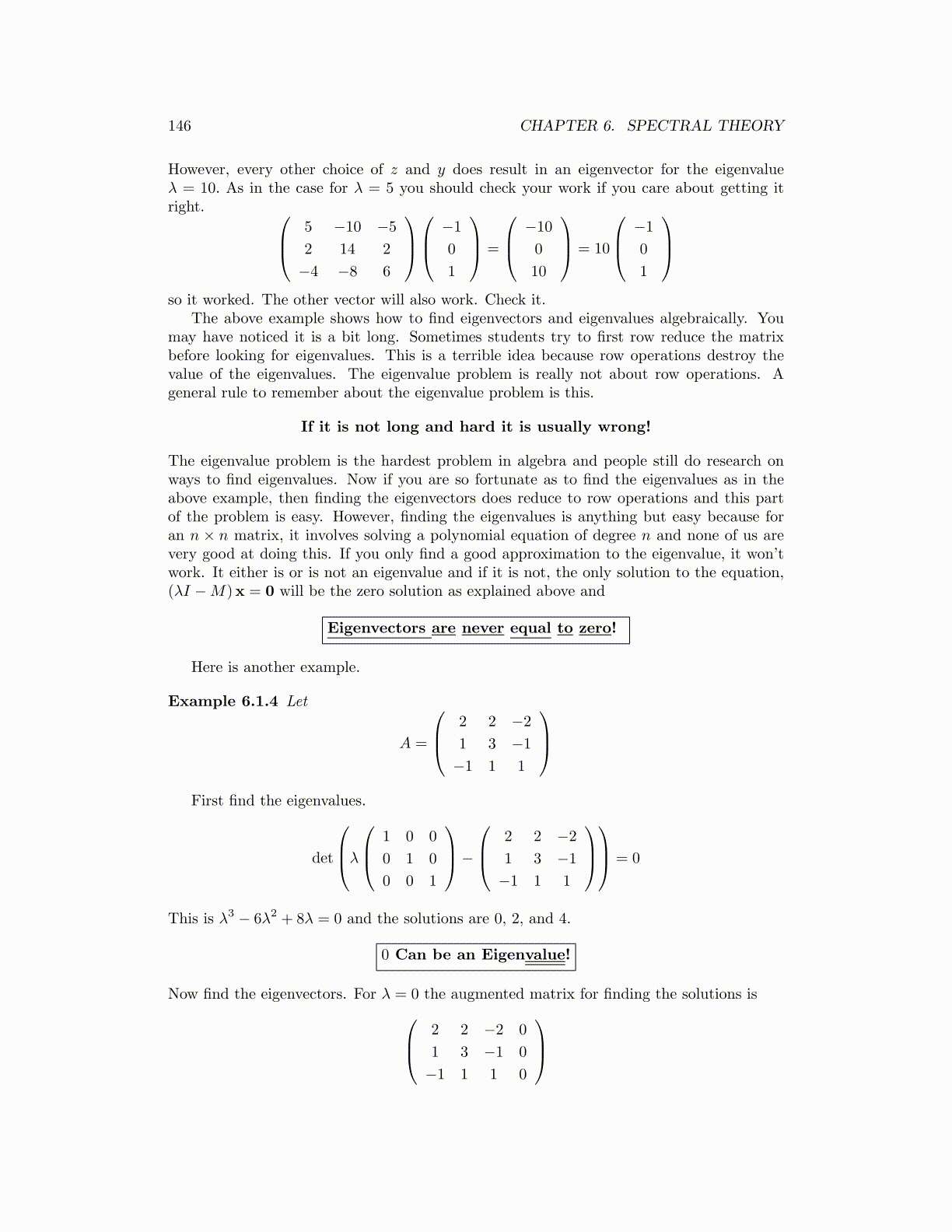
146 CHAPTER 6. SPECTRAL THEORY
However, every other choice of z and y does result in an eigenvector for the eigenvalueλ = 10. As in the case for λ = 5 you should check your work if you care about getting itright. 5 −10 −5
2 14 2
−4 −8 6
−1
0
1
=
−10
0
10
= 10
−1
0
1
so it worked. The other vector will also work. Check it.
The above example shows how to find eigenvectors and eigenvalues algebraically. Youmay have noticed it is a bit long. Sometimes students try to first row reduce the matrixbefore looking for eigenvalues. This is a terrible idea because row operations destroy thevalue of the eigenvalues. The eigenvalue problem is really not about row operations. Ageneral rule to remember about the eigenvalue problem is this.
If it is not long and hard it is usually wrong!
The eigenvalue problem is the hardest problem in algebra and people still do research onways to find eigenvalues. Now if you are so fortunate as to find the eigenvalues as in theabove example, then finding the eigenvectors does reduce to row operations and this partof the problem is easy. However, finding the eigenvalues is anything but easy because foran n × n matrix, it involves solving a polynomial equation of degree n and none of us arevery good at doing this. If you only find a good approximation to the eigenvalue, it won’twork. It either is or is not an eigenvalue and if it is not, the only solution to the equation,(λI −M)x = 0 will be the zero solution as explained above and
Eigenvectors are never equal to zero!
Here is another example.
Example 6.1.4 Let
A =
2 2 −2
1 3 −1
−1 1 1
First find the eigenvalues.
det
λ 1 0 0
0 1 0
0 0 1
−
2 2 −2
1 3 −1
−1 1 1
= 0
This is λ3 − 6λ2 + 8λ = 0 and the solutions are 0, 2, and 4.
0 Can be an Eigenvalue!
Now find the eigenvectors. For λ = 0 the augmented matrix for finding the solutions is 2 2 −2 0
1 3 −1 0
−1 1 1 0